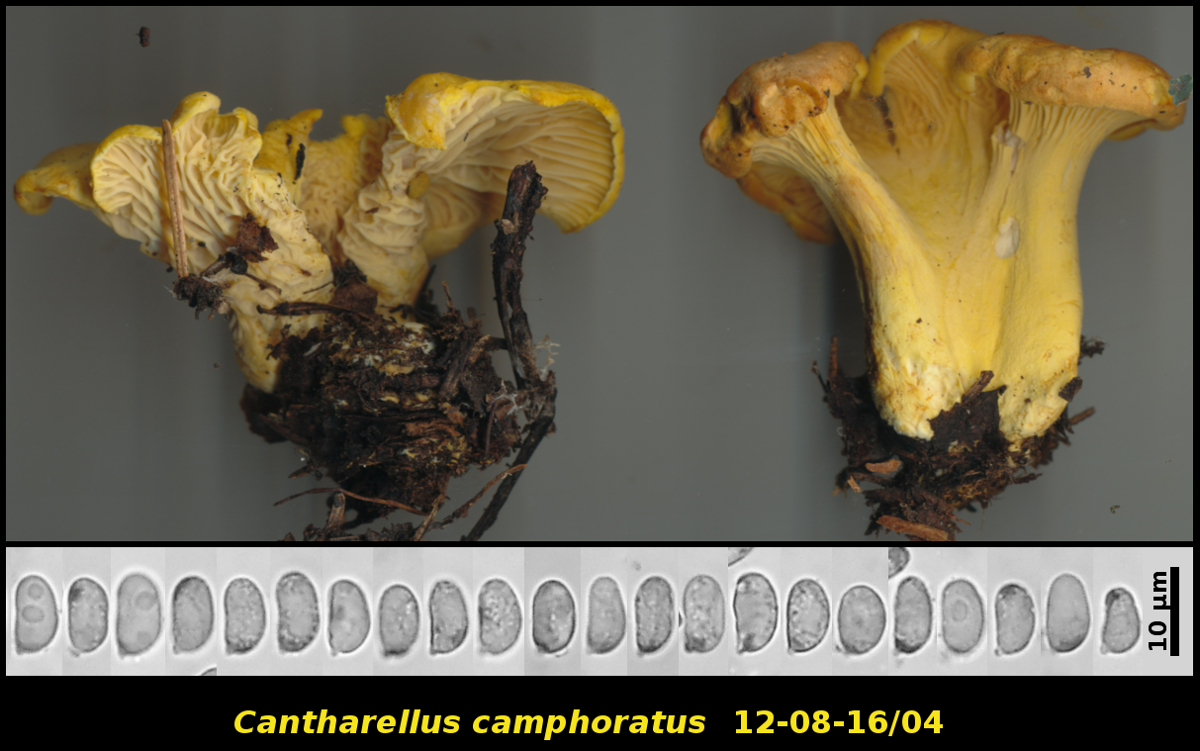Fleshy Fungi of New Brunswick >>
Cantharellus camphoratus
Cantharellus camphoratus R.H. Petersen

Gregarious in leaf litter, associated with Abies balsamea and Populus tremuloides, Nepisiguit Protected Natural Area, New Brunswick (12-08-16/04).
Basidiospores ellipsoidal to ovoid, often concave on the ventral side, smooth, without iodine reactions, 7.2-9.7 X 4.1-5.3 μm, D/d = 1.42-2.03 (average[31]: 8.4 X 4.7 μm, D/d = 1.80)
Until recently all collections of large yellow chanterelles were considered to belong to the single species Cantharellus cibarius. As with many groups of fungi, molecular studies are showing the situation to be a bit more complicated. Cantharellus cibarius may not occur in North America at all! Dr. R.G. Thorn and colleagues, reviewing species of Cantharellus from Newfoundland and Labrador (Botany 95: 547-560. 2017), reported three species from that province, including C. camphoratus. These same authors discussed and illustrated the three species further in the online journal Omphalina (Vol. 8(4):6-14. 2018).
Cantharellus camphoratus was described from Nova Scotia by Dr. R.H. Petersen in 1979 and was not reported again until Dr. Thorn and colleagues reported it from Newfoundland. It is probably not rare but has only been hidden under the name C. cibarius. It is characterized by its commonly clustered stipes and often fused caps, as can be seen in the photo above. It has the typical chanterelle odour of apricots. Cantharellus amethysteus, a species also reported from Newfoundland and Labrador, has clustered fruiting bodies, but seems to be associated with birch and has longer and narrower basidiospores.
Photograph: D. Malloch (12-08-16/04).